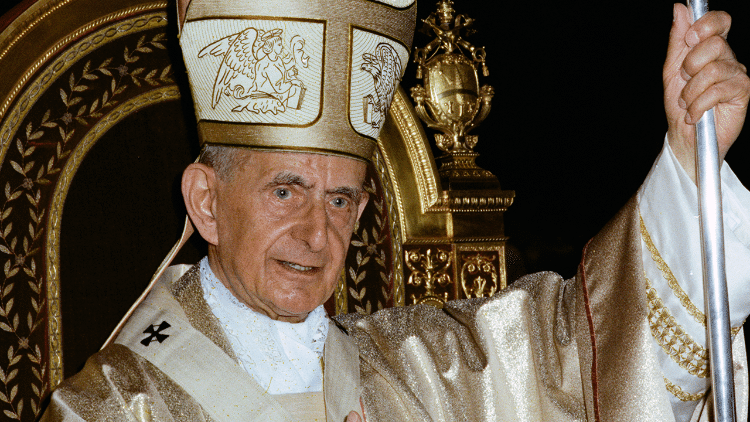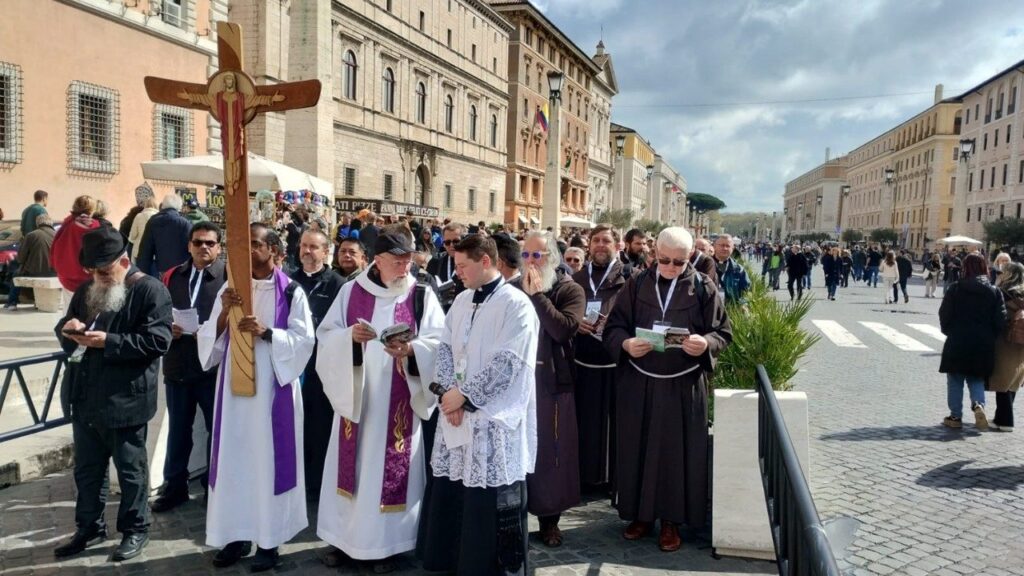Paul VI, Pope “martyr”
On January 18, the Editrice Vaticana Bookstore publishes the book "Paul VI, Doctor of the Mystery of Christ", which collects the homilies that Cardinal Marcello Semeraro, prefect of the Dicastery for the Causes of Saints, delivered on August 6 from 2008 to 2014, on the anniversary of the death of Pope Montini. The volume has a preface by Pope Francis, which we publish below, and an epilogue by Monsignor Leonardo Sapienza, regent of the Prefecture of the Papal Household

I am glad that Cardinal Marcello Semeraro has decided to publish the series of homilies delivered on the day of the Transfiguration of the Lord, which is also the anniversary of the passage of Saint Paul VI from “this painful, dramatic, and magnificent land”, as he called it in his Testament, to the Father’s house. I am also happy that he chose him last year, 2023, when sixty years passed since Giovanni Battista Montini was called to the Petrine ministry.
Paul VI! It has often occurred to me to wonder if this Pope should not be considered a “martyr.” Once, in a private meeting near the beatification rite of Pope Montini, I also told Bishop Marcello. I asked him, somewhere between serious and joking, if he should wear red or white liturgical vestments during the rite. He did not understand me and observed that red was the color prescribed for the funerals of Popes… I explained to him what he meant, and he remained thoughtful with me.
In fact, on December 15, 1969, during the classic exchange of Christmas greetings with the College of Cardinals and the Roman Curia, Paul VI referred to the fact that Vatican II had “produced a state of alert and, in certain respects, of spiritual tension”, including the crisis of many priests. In that context, he said: “This is our crown of thorns.”
The exhortation to love the Church was one of the most frequent and repeated in the teaching of Paul VI. He considered it as the mirror where we see Christ, the space where we meet Christ, and this was, for him, the unum necessarium. We all remember his prayer to Christ, the only one necessary! And it is this unique and absolute love for Christ that Cardinal Semeraro wanted to underline with his homilies, contextualized in the mystery of the Transfiguration.
Of Christ transfigured, Saint Paul VI was the contemplator, the preacher, the witness. It would seem that he wanted to enter that evangelical scene as a companion of the three apostles chosen by Jesus. Furthermore: his intimate and secret desire was always to be “cum ipso in monte” and this caused his own life to be transfigured.
I am glad that these reflections are published, because the figure of Saint Paul VI has always attracted me too. I have already said on other occasions how some of this Pope’s speeches – such as those in Manila, Nazareth… – have given me spiritual strength and have done so much good in my life. It is well known that my first Apostolic Exhortation Evangelii gaudium was intended to be a bit of the other side of the coin of the Exhortation Evangelii nuntiandi, a pastoral document that I love very much. Everyone, on the other hand, has heard me often repeat the expression that descended from there to my heart: the sweet and comforting joy of evangelizing. I repeated it when I was bishop of Buenos Aires, and I repeat it today.
The title chosen for this collection includes a phrase by Marie-Joseph Le Guillou, a great Dominican theologian, whom I also appreciate very much. He wrote it in a volume dedicated to the prophetic, spiritual and doctrinal, pastoral and missionary greatness of the Second Vatican Council. Therefore, I would also like to take an example from him before concluding these lines of presentation. Indeed, as the jubilee event of 2025 approaches, I have asked everyone to prepare for it by taking in their hands the fundamental texts of the Second Vatican Ecumenical Council.
Now, in that book of his, Father Le Guillou describes Vatican II as an act of contemplation of the Face of Christ. Also in this light, the magisterium of Vatican II must be reread, studied, deepened and put into practice. To a Jesuit who, during a meeting in Vilnius, Lithuania, had asked me how he could help, I responded: “Historians say that it takes 100 years for a Council to be implemented. We are halfway there. Therefore, if you want to help me, act so that the Council advances in the Church”.
Contemplate the face of Christ! In Evangelii Gaudium I wrote that every preacher “is a contemplative of the Word and also a contemplative of the people.” I would like to say that so is the Synodal Church. Contemplative of the Word and also contemplative of the holy faithful people of God. I wish with all my heart that this is also what the reflections written on these pages encourage.
Related

Pope Francis and Hope: Reflection on Jesus’ Encounter with Zacchaeus
Exaudi Staff
02 April, 2025
2 min

Technology with a Human Face: Pope Francis’ Call for Ethical and Caring Use
Exaudi Staff
01 April, 2025
1 min

Pope Francis Continues Optimistic Recovery and Maintains Work Pace
Exaudi Staff
01 April, 2025
2 min

The Pope to the Missionaries of Mercy: God became man to reveal to the world that he never abandons us!
Exaudi Staff
30 March, 2025
2 min
 (EN)
(EN)
 (ES)
(ES)
 (IT)
(IT)

